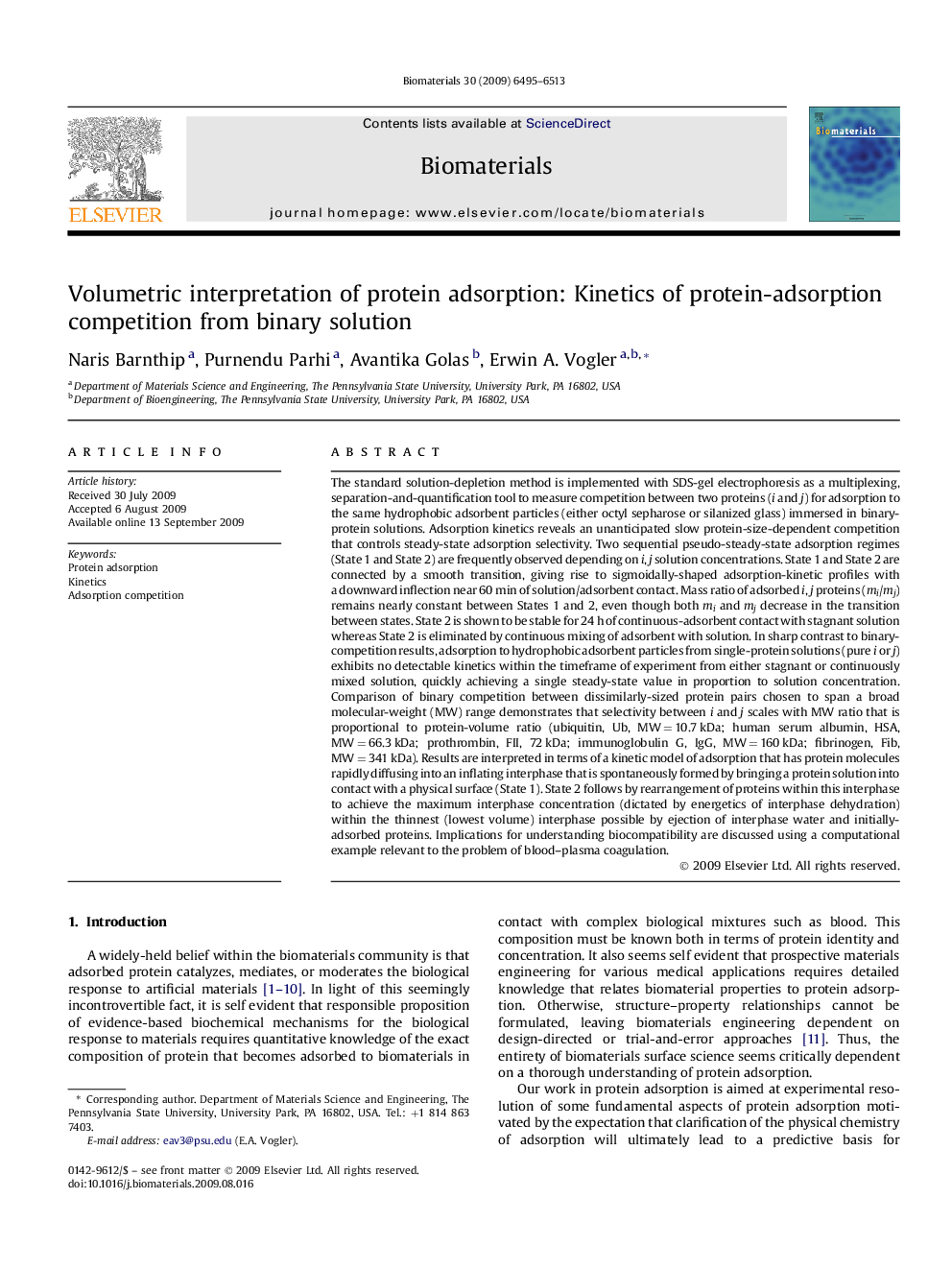| Article ID | Journal | Published Year | Pages | File Type |
|---|---|---|---|---|
| 8305 | Biomaterials | 2009 | 19 Pages |
The standard solution-depletion method is implemented with SDS-gel electrophoresis as a multiplexing, separation-and-quantification tool to measure competition between two proteins (i and j) for adsorption to the same hydrophobic adsorbent particles (either octyl sepharose or silanized glass) immersed in binary-protein solutions. Adsorption kinetics reveals an unanticipated slow protein-size-dependent competition that controls steady-state adsorption selectivity. Two sequential pseudo-steady-state adsorption regimes (State 1 and State 2) are frequently observed depending on i, j solution concentrations. State 1 and State 2 are connected by a smooth transition, giving rise to sigmoidally-shaped adsorption-kinetic profiles with a downward inflection near 60 min of solution/adsorbent contact. Mass ratio of adsorbed i, j proteins (mi/mj) remains nearly constant between States 1 and 2, even though both mi and mj decrease in the transition between states. State 2 is shown to be stable for 24 h of continuous-adsorbent contact with stagnant solution whereas State 2 is eliminated by continuous mixing of adsorbent with solution. In sharp contrast to binary-competition results, adsorption to hydrophobic adsorbent particles from single-protein solutions (pure i or j) exhibits no detectable kinetics within the timeframe of experiment from either stagnant or continuously mixed solution, quickly achieving a single steady-state value in proportion to solution concentration. Comparison of binary competition between dissimilarly-sized protein pairs chosen to span a broad molecular-weight (MW) range demonstrates that selectivity between i and j scales with MW ratio that is proportional to protein-volume ratio (ubiquitin, Ub, MW = 10.7 kDa; human serum albumin, HSA, MW = 66.3 kDa; prothrombin, FII, 72 kDa; immunoglobulin G, IgG, MW = 160 kDa; fibrinogen, Fib, MW = 341 kDa). Results are interpreted in terms of a kinetic model of adsorption that has protein molecules rapidly diffusing into an inflating interphase that is spontaneously formed by bringing a protein solution into contact with a physical surface (State 1). State 2 follows by rearrangement of proteins within this interphase to achieve the maximum interphase concentration (dictated by energetics of interphase dehydration) within the thinnest (lowest volume) interphase possible by ejection of interphase water and initially-adsorbed proteins. Implications for understanding biocompatibility are discussed using a computational example relevant to the problem of blood–plasma coagulation.
